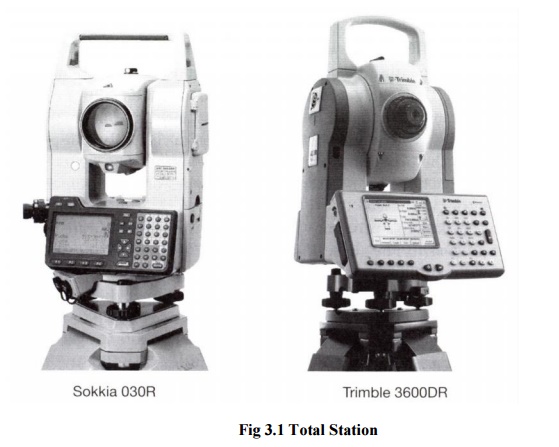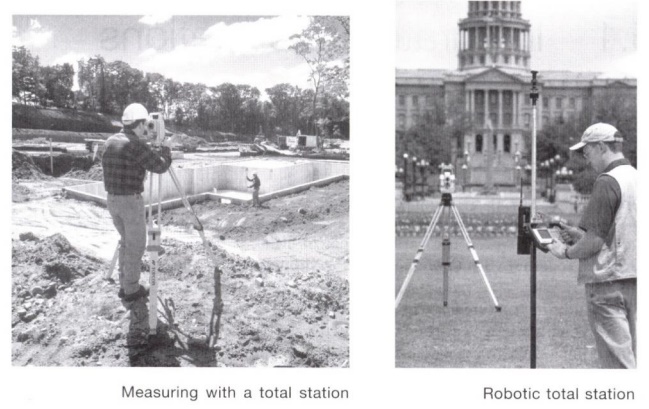Chapter: Civil Surveying : Survey Adjustments
Total Station: Basic Principle

TOTAL STATION: BASIC PRINCIPLE
Although taping and theodolites are used regularly on site - total
stations are also used extensively in surveying, civil engineering and
construction because they can measure both distances and angles.
A typical total station is shown in the figure
below

Fig 3.1
Total Station
Because the instrument combines both angle and
distance measurement in the same unit, it is known as an integrated total
station which can measure horizontal and vertical angles as well as slope
distances.
Using the vertical angle, the
total station can calculate the horizontal and vertical distance components of
the measured slope distance.
As well as basic functions, total
stations are able to perform a number of different survey tasks and associated
calculations and can store large amounts of data.
As with the electronic
theodolite, all the functions of a total station are controlled by its
microprocessor, which is accessed thought a keyboard and display.
To use the total station, it is
set over one end of the line to be measured and some reflector is positioned at
the other end such that the line of sight between the instrument and the
reflector is unobstructed (as seen in the figure below).
-The reflector is a prism attached to a detail pole
-The telescope is aligned and pointed at the prism
-The measuring sequence is
initiated and a signal is sent to the reflector and a part of this signal is
returned to the total station
-This signal is then analysed to
calculate the slope distance together with the horizontal and vertical angles.
-Total stations can also be used
without reflectors and the telescope is pointed at the point that needs to be
measured
-Some instruments have motorised
drivers and can be use automatic target recognition to search and lock into a
prism - this is
a fully automated process and does not require an operator.
-Some total stations can be controlled from the
detail pole, enabling surveys to be conducted by one person.

Fig 3.2
Measuring with a Total Station
Most total stations have a
distance measuring range of up to a few kilometres, when using a prism, and a
range of at least 100m in reflector less mode and an accuracy of 2-3mm at short
ranges, which will decrease to about 4-5mm at 1km.
Although angles and distances can
be measured and used separately, the most common applications for total
stations occur when these are combined to define position in control surveys.
As well as the total station,
site surveying is increasingly being carried out using GPS equipment. Some
predictions have been made that this trend will continue, and in the long run
GPS methods may replace other methods.
Although the use of GPS is
increasing, total stations are one of the predominant instruments used on site
for surveying and will be for some time.
Developments in both technologies will find a
point where devices can be made that complement both methods.
Related Topics